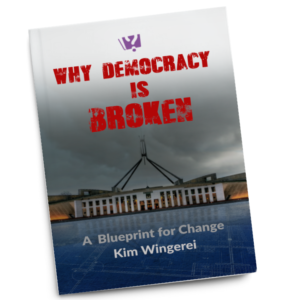“NBN Co needs to be a monopoly wholesale provider for it to be economically viable”.
This was the view espoused by Dr Ziggy Switkowski after being appointed chairman of NBN Co by the Coalition in 2013 to implement its ‘Faster, Affordable, Sooner” version of the NBN.
This monopoly reality contrasted with the views of the key Coalition politicians, Malcolm Turnbull and Paul Fletcher, who prior to coming to political power had been sharply critical of the NBN Co’s monopoly direction (see here and here).
Nevertheless, Switkowski was able to get significant protection for NBN Co’s monopoly with
-
- fixed line competitors forced to operate as wholesale-only operators subject to ACCC pricing determinations, and
- contribute to NBN Co’s regional and rural loss making services via a $7 per month levy imposed on all wholesale services.
Such regulation has certainly been effective in limiting NBN Co’s competition from fixed network operators (TPG Telecom and various greenfield operators). The mobile network operators were exempted from these regulations, even though as far back as 2016 it was clear that new 5G technologies would enable fixed wireless broadband offers to compete against NBN Co.
However, time and technology is finally catching up with NBN Co and they are exposing the frailty of its business model as the competition begins to bite.
In its latest documents supporting a revised Special Access Undertaking to the ACCC, NBN Co highlights that it is under significant threat from competition.
“These [competition] risks already constrain nbn’s pricing well beyond the SAU’s current price controls, and will continue to do so under the new price controls proposed in this Variation [of the SAU]”
NBN Co is now clearly highlighting that the monopoly pricing restraints proposed in its new SAU proposal, with a $31.5 billion write-off of incurred costs, will not be the primary binding factor on its pricing plans. Instead, it will be competition that determines NBN Co’s plans for pricing broadband services.
Churn
NBN Co has for the first time disclosed ‘net churn’ statistics that highlight approximately 249,000 (or 3.6%) of premises moved away from the NBN in FY21. This is expected to rise to 285,000 premises in FY23.
Competition in apartment blocks (ie. Multi-Dwelling Units or MDUs) is seeing higher churn rates as alternative network operators target these areas.
Mobile network operators (MNOs) also have strong incentives to churn customers to their mobile networks rather than use the NBN. Predictions of 1.2 million premises by June 2024 using fixed wireless subscriptions are cited to highlight the competitive pressure NBN Co is under.
New Pricing Plans
NBN Co has proposed new pricing plans for its lower (50Mbps or less download speeds) and higher (100Mbps and above download speeds) speed products and it is clear that the fixed wireless broadband offers from the MNOs are a big factor in shaping the plans.
The prices for the higher speed plans have been reduced in order to attract more customers on to these plans, because a fixed broadband network is better able to provide these higher speeds and the corresponding higher download demand (ie. volume of data downloaded) than mobile networks (where spectrum limitations will eventually become a problem).
NBN Co acknowledges that customer takeup of these high speed plans is ‘quite elastic’, meaning that cheaper prices should increase the number of customers on these plans. This will look to secure the good high paying customers for NBN Co, rather than having them churn to the MNOs.
On the lower speed plans (and hence lower download demand) NBN Co has generally increased prices (except for the 25Mbps product) with the retention of charges for utilised CVC capacity above allocated amounts. This is a clear signal to NBN Co’s customers (ie Retail Service Providers including MNOs) to move their customers up to higher speed plans rather than take the risk of higher CVC charges on these plans.
So is NBN Co effectively seeking to abandon the lower speed, more price sensitive segment of the market to the MNOs? It would appear this is the case, at least for the time being. In the long run, the MNOs will only be able to place a portion of their fixed broadband customers on their mobile networks without overloading and degrading the quality of their precious mobile investments.
NBN Co may be playing a longer game by looking to encouraging the MNOs to put a limited amount of their customer base on the lower speed plans on their mobile network and pushing the remainder up to higher speed plans. It is a risky strategy for NBN Co and NBN Co’s financials may take a hit if it doesn’t go to plan.
Financial Implications
“The extent of competition and substitution risk outlined above mean that nbn faces substantial revenue sufficiency risk. The consequence of this is that nbn faces the risk of being unable to generate sufficient cashflows to sustain its business and continue to invest in the network to meet its policy obligations and the needs of end-users.”
The inability to raise prices due to competition is likely to be the main factor that affects the ongoing financial sustainability of NBN Co.
If this is the case then it is more consequential than the write-down that naturally follows from the capping of the ICRA account examined in a previous blog post.
As highlighted above revenue constraints will affect NBN Co’s ability to invest in its network – a fundamental requirement for any telecommunications provider. Capital expenditure is necessary to replace older technologies and ensure users are able to receive the latest improvement from newer technologies.
Of major consequence will be the need to invest in regional areas – where losses on capital expenditure will be inevitable due to high costs and lower revenues.
NBN Co will need to find new revenue sources to counteract the effects of competition. One important one will be to re-organise funding for regional Australian infrastructure as I have explained previously.
The post NBN Co admits to significant competition impacts appeared first on Gary McLaren.


